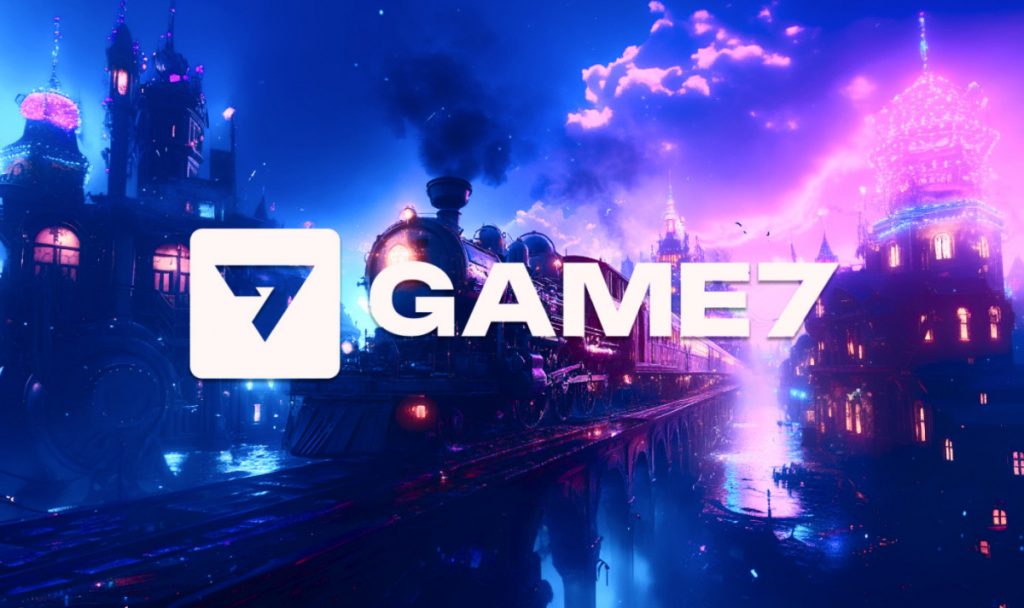Game7 Releases ‘State Of Web3 Gaming Report’: Telegram Captures 21% Of New Games, Industry Shifts Focus From Game Titles To Gaming Chains


In Brief
Game7 and Naavik release the new ‘State of Web3 Gaming Report,’ offering objective data, emerging trends, and valuable insights into the crypto gaming sector.

Community focused on advancing blockchain technology in gaming, Game7 announced the release of its 2024 State of Web3 Gaming Report. This report, created in partnership with the gaming industry research, consulting, and advisory firm Naavik, offers an independent and comprehensive analysis of the cryptocurrency gaming sector. The study provides objective data, emerging trends, and valuable insights tailored for professionals within the industry.
“Maintaining accurate and objective data in Web3 gaming is a herculean effort, requiring a deep understanding of technical, gaming, financial, and regulatory aspects,” said George Isichos, Core Contributor at Game7, in a written statement. “For the second year, Game7 is proud to deliver this comprehensive analysis as a public good to advance the Web3 gaming ecosystem,” he added.
The “State of Web3 Gaming 2024” provides an in-depth overview of crucial ecosystem metrics that have developed over the last year, building on the foundation established in the 2023 report. Using thorough primary research techniques, Game7 has collected, analyzed, and mapped data from over 2,500 blockchain games, 1,500 funding rounds, and 100 blockchain ecosystems over the past six years.
Among the key findings, the report highlights that Telegram has emerged as a key development platform for Web3 games, accounting for 21% of new Web3 game launches in 2024. Game publishers are leveraging the messaging application to create supplementary experiences for user acquisition. This shift could influence the strategies of traditional mobile platforms regarding Web3 gaming, especially as mobile gaming continues to face obstacles due to restrictive app store policies from Apple and Google, as well as regulatory challenges in mainstream markets.
Furthermore, until Q3 2024, funding for Web3 gaming titles and infrastructure grew by 17% year-over-year, signaling a shift towards smaller, more strategic investment rounds as teams focus on upcoming token launches. Funding remains limited, influenced by the absence of a breakout moment like “Axie Infinity” for Web3 gaming, as well as broader economic uncertainties, including a slowdown in the mainstream gaming sector and the impact of the US elections. Gaming token launches saw a significant 200% increase year-over-year, with game titles making up 74% of these new launches. However, the number of launches still falls short of the peak levels seen in 2021.
The report also notes that the Immutable and Arbitrum ecosystems experienced the most growth over the past year. Immutable has solidified its position as the leading blockchain gaming ecosystem, with 181 announced titles, representing a 71% year-over-year increase and capturing 33% of games migrating from Polygon. Arbitrum saw a 68% year-over-year growth, reaching 119 titles, largely driven by the success of the Orbit Framework, which powered 23 new Web3 gaming networks. This has established Layer 2 and 3 networks as the standard for new, specialized blockchain gaming ecosystems.
Interest In Gaming Blockchains Surges, While Ecosystems Face Game Development And Integration Pains
For another consecutive year, interest in the development of new gaming blockchains has outpaced the creation of new games. By Q3 2024, there were 104 new announcements for blockchain networks supporting Web3 games, compared to 252 new Web3 game announcements. This highlights a recurring trend where infrastructure launches are prioritized over the development of new content. Although new Web3 game announcements have decreased by 36% compared to 2023, the number of teams leaving Web3 or halting development has dropped by 84%.
Many Web3 gaming ecosystems are facing challenges in both game development and blockchain integration, as evidenced by the gap between game announcements, games with playable content, and those with live Web3 integration. An analysis of the largest gaming ecosystems shows that 45% of Web3 games are in a playable state, while only 34% have successfully integrated blockchain infrastructure into their games.
Disclaimer
In line with the Trust Project guidelines, please note that the information provided on this page is not intended to be and should not be interpreted as legal, tax, investment, financial, or any other form of advice. It is important to only invest what you can afford to lose and to seek independent financial advice if you have any doubts. For further information, we suggest referring to the terms and conditions as well as the help and support pages provided by the issuer or advertiser. MetaversePost is committed to accurate, unbiased reporting, but market conditions are subject to change without notice.
About The Author
Alisa, a dedicated journalist at the MPost, specializes in cryptocurrency, zero-knowledge proofs, investments, and the expansive realm of Web3. With a keen eye for emerging trends and technologies, she delivers comprehensive coverage to inform and engage readers in the ever-evolving landscape of digital finance.
More articles

Alisa, a dedicated journalist at the MPost, specializes in cryptocurrency, zero-knowledge proofs, investments, and the expansive realm of Web3. With a keen eye for emerging trends and technologies, she delivers comprehensive coverage to inform and engage readers in the ever-evolving landscape of digital finance.


















































